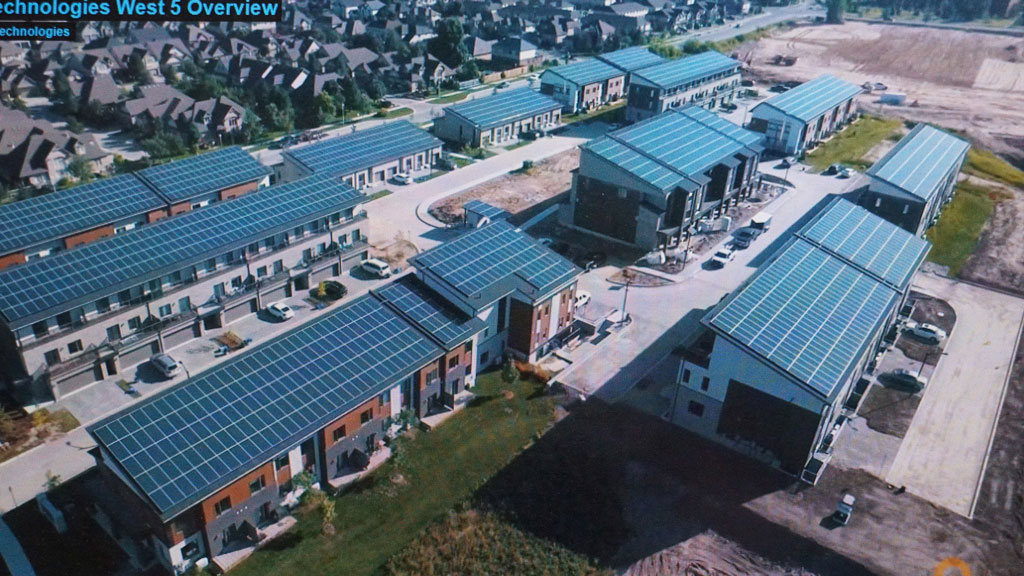Six years in the making, the first net-zero mixed-use community in Ontario is taking shape in London.
A 70-acre development called West 5, it sets energy precedents that can help open doors for other green-conscious developments.
“The entire community will consume about 10 megawatts of energy which will be produced in the community” through solar means, Neil Carter, director of commercial construction, Sifton Properties Limited, one of West 5’s developers, told an audience recently at a Canada Green Building Council webinar on the project.
That solar power will be generated from panels on the roofs of all of its buildings, including a parking garage, and from solar arrays incorporated into many of the building’s facades.
When built out in 10 to 15 years, the neighbourhood will have 2,000 residential units and up to 400,000 square feet of commercial/retail space, Carter said.
Initially, Sifton’s objective was to create “a smart, healthy and walkable community” but its agenda expanded to include net-zero when Sifton partnered with s2e Technologies, which focuses on sustainable community development.
Derek Satnik, an engineer with s2e, said the business case for net-zero communities makes more sense as technological improvements rise.
“If you can find these things, if you can structure the project right, it really does pay for itself. Honestly, it is getting more and more compelling.”
Carter said the construction costs to meet net-zero have dropped “significantly” largely because of a growing use of high efficiency materials, technologies and the efforts by more builders to employ energy efficiency practices.
As an example, more homes today are constructed with additional exterior insulation and triple glazed windows because it is not expensive, Carter said.
Continued technological advancements also support the coming net-zero shift, he said, noting 275 watts was the solar roof panel standard five years ago but now panels are closer to 500 watts.
“It is going to help builders meet net-zero energy goals because they no longer have to have those huge roof areas to accommodate solar roof panels.”
Other energy features at West 5 include efficient air handling HVAC systems by Mitsubishi Systems, LED lighting, smart controls, building siting for solar gain and low window-to-wall ratios.
“They are inexpensive ways to bring a building to net-zero,” Carter pointed out.He added a 20 per cent premium on energy efficiency six or seven years ago when construction started on West 5 has dropped to about 12 to 13 per cent today. That is still a premium but tenants are willing to pay more for rent because those costs are offset by lower utility bills.
There are energy trade-offs in the project, however.
While the lowrise townhouse component readily meets net-zero targets, buildings such as the 10-storey 115-unit residence on the site are net positive. The difference is overcome through community net metering where energy is “shared between them” to achieve net-zero goals across the development.
Carter told the audience the community’s shared metering was approved for the first time under a new provincial regulation that includes the names of Sifton and other key players on the development team.
Satnik said the provincial precedent is important because Ontario’s aging energy grid will need retrofitting and “it would be amazingly positive if we could have lots of private players helping to rebuild it. That is what Neal (Sifton) is doing here.”
Panellist Clive Carr, residential sales manager, HVAC with Mitsubishi Electric Sales Canada Inc., said he’s overcome developer skepticism about new energy efficient technology by citing previous successes in the field.
In 2016 Mitsubishi worked with Natural Resources Canada to demonstrate the feasibility of cold climate air source heat pumps for residential developments.
“We see a growing trend of its acceptance…and other manufacturers are coming on board with their own cold air heat pumps.”











Recent Comments
comments for this post are closed